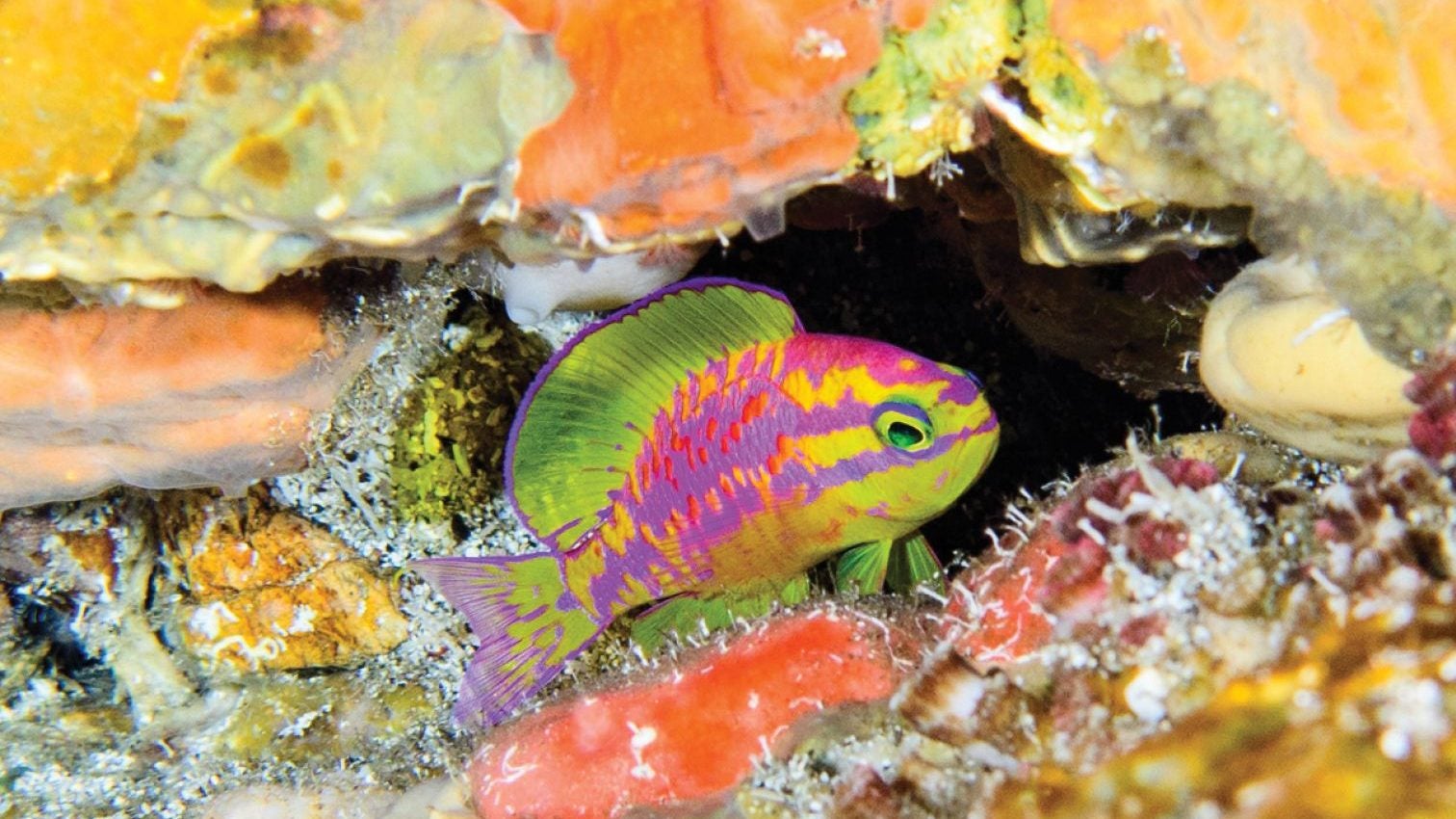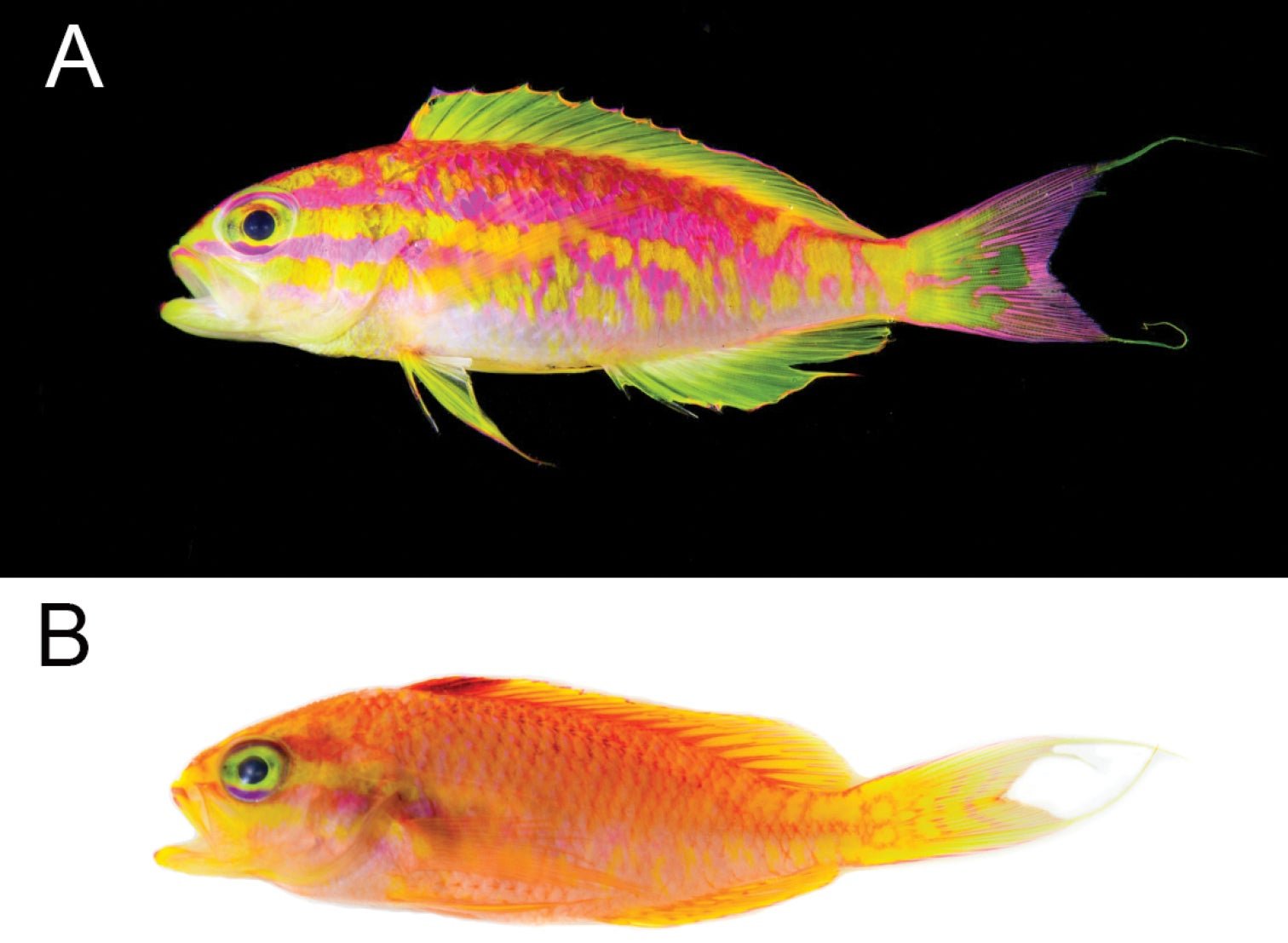One of the most elusive fish in the Atlantic is a little dude who loves hot pink
Almost 400 feet deep into the Atlantic Ocean, off the coast of Brazil, researchers discovered a new fish species so beautiful that they named it after the Greek goddess of love. In a new study, a team from the California Academy of Sciences wrote, “The beauty of the Aphrodite anthias enchanted us during its discovery much like Aphrodite’s beauty enchanted ancient Greek gods.”


Almost 400 feet deep into the Atlantic Ocean, off the coast of Brazil, researchers discovered a new fish species so beautiful that they named it after the Greek goddess of love. In a new study, a team from the California Academy of Sciences wrote, “The beauty of the Aphrodite anthias enchanted us during its discovery much like Aphrodite’s beauty enchanted ancient Greek gods.”
Also known as Tosanoides aphrodite, the fish is both extremely rare and very bright; the males in particular are a dazzling hot pink. It is the only one of its kind ever found in the Atlantic—all other known fish in the Tosanoides genus are in the Pacific Ocean. National Geographic also points out that seven reef species at Saint Paul’s Rocks, where Aphrodite anthias was discovered, are found nowhere else on earth. This new discovery marks the eighth.
“It was so colorful, so different, and like nothing we have seen before,” Hudson Pinheiro, the lead author of the study, told Quartz.
The orange hue of the female and neon pink of the male are also striking because these colors aren’t actually visible that deep in the ocean. As Luiz Rocha, an ichthyologist at the California Academy of Sciences who also made the discovery, explained in an email: “Those colors (red, pink and yellow) are invisible to us at that depth since those light waves don’t penetrate that deep in the water column.” The fluorescent colors were only apparent to the divers because they had a light.

The existence of Aphrodite anthias in these deep-water mesophotic coral reefs, sometimes dubbed the twilight zone, also raises questions about how the fish see each other. Rocha said that this issue is an ongoing topic of study at the lab, and theorizes that the species “must be seeing in a different color spectrum than ours.” Pinheiro added that this spectrum might be some ultraviolet, or “a different spectrum of very low light.”
Still, the color difference between the sexes—which makes the species what’s known as “sexually dichromatic”—serves a purpose. The hot pink of the male is a type of “sexual selection,” Pinheiro said, which helps to attract more females.
Female Aphrodite anthias aren’t the only ones enamored with hot pink: The researchers were so distracted while trying to collect the fish that they didn’t notice a 10-foot sixgill shark swimming above them.
That shark makes for an impressive sight, and also highlights the impact of pollution on these biodiverse reefs. “For a long time, people assumed that mesophotic reefs were a refuge,” Rocha says. “But every time we go there we find new species (showing how unique they are) and signs of human presence…If you look at the shark video linked in the paper you will see that the shark has a fishing line attached to its mouth!”
Earlier this year, a research team that included Pinheiro and Rocha wrote a paper on the impacts of climate change and humans on mesophotic reefs.
The researchers are optimistic, though, that more new species of Tosanoides might be discovered elsewhere, including in the Indian Ocean and off the African coast. An ocean teeming with little hot pink dudes and their orange fish dudettes sounds like one worth preserving.